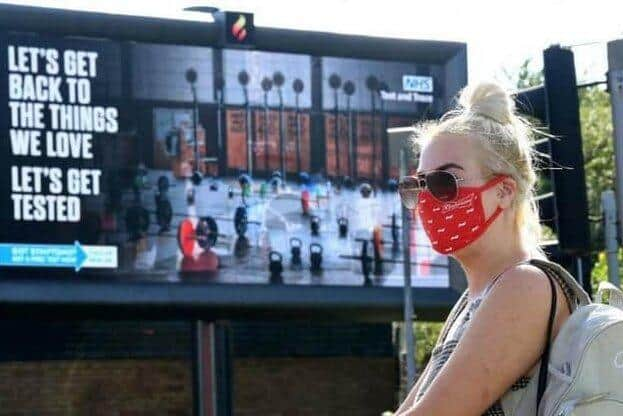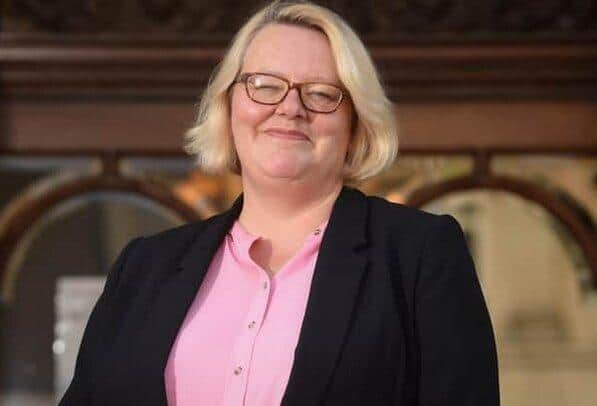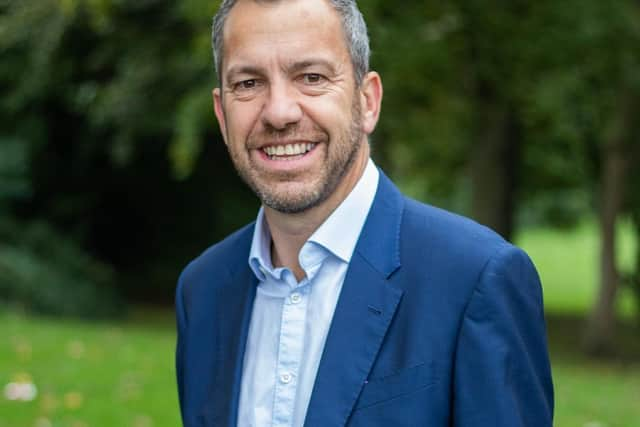Blackpool’s 'strong case' for Fylde coast to escape blanket Lancashire Covid restrictions was ignored, council leader says
and live on Freeview channel 276
That is according to the leader of Blackpool Council, Lynn Williams, who was reflecting on the time in October 2020 when the system of Covid ‘tiers’ was introduced in an attempt to stem rapidly rising infection rates by introducing restrictions of different degrees throughout the country depending on how bad things were in each area.
It comes after it emerged that there was a perception within Whitehall at the time that Lancashire's councils were more compliant with ministerial demands over the arrangement than neighbouring Greater Manchester - and so should have been rewarded with a softer set of regulations as a result.
Advertisement
Hide AdAdvertisement
Hide AdThe policy has recently been the subject of scrutiny at the Covid-19 Inquiry, with the then health secretary Matt Hancock saying in his evidence late last month that some regional leaders “were not constructive” during discussions about its implementation.


Minutes from the government’s high-level Covid-O committee were also read out by Greater Manchester’s metro mayor Andy Burnham – who had a standoff with the government over moving his patch into the toughest ‘Tier 3’ band – in which it was stated that: “Lancashire should have a lighter set of measures imposed than Greater Manchester since they had shown a greater willingness to co-operate.”
However, in spite of that sentiment, Lancashire was ultimately not treated any differently to its neighbour – with both areas eventually being placed in Tier 3 and seeing socialising between different households banned in indoor and many outdoor settings.
Looking back, Cllr Williams told The Gazette that an appeal for nuance in the new system went unheard.
Advertisement
Hide AdAdvertisement
Hide Ad“Blackpool Council, along with local other authorities in Lancashire, lobbied government hard about the implications of moving into Tier 3 and the impact that it would have on our residents and local economies - in our town and across the county.


“We made strong representations that Lancashire should be treated differently. We are a very diverse area, both in terms of population and geography.
“In particular, we sought recognition that the Fylde coast had very different Covid prevalence figures, different demographics and a different economy than the rest of Lancashire. We felt there was a lack of understanding of these issues and of the impact on residents and businesses.
“Ultimately, government decided on blanket measures for the county despite our having made what we felt was a strong case that different measures could and should be applied which would have avoided such harm to our businesses and town.
Advertisement
Hide AdAdvertisement
Hide Ad“We had no option [but] to ultimately agree to this, but had we not collectively been so vocal we would have been placed in Tier 3 with no money and support. We did manage to secure many millions of pounds of funding across Lancashire to help businesses and additional fast testing capacity which was used to protect the most vulnerable people,” Cllr Williams.


For Lancashire, the rules came into force on 17th October, after a week of intense negotiations ended in agreement over a support package, while Greater Manchester was moved into the top tier just days later after their talks broke down.
Chorley Council leader Alistair Bradley - who also chairs the Lancashire district leaders group, which includes the leaders of Fylde and Wyre councils - says that it would have been “absolutely wrong” to determine restrictions for reasons such as those suggested in the Covid-O committee minutes.
However, he echoed Cllr Williams’ comments that Lancashire’s leaders had battled hard to get the best package of financial support for the county – knowing that the most restrictive rules were always likely to come Lancashire’s way because of high Covid case numbers in some parts.
Advertisement
Hide AdAdvertisement
Hide Ad“[The conversation with the government] was: ‘You’re going to do this to us anyway, so how are you going to make reparation to people in those communities?’
“We couldn’t get away from the numbers, they were always going to put us in that bracket – so we were asking, ‘Can we have this?’ and ‘Can we do [it] this way?’
“Andy Burnham had to speak up for all of Manchester and we had to speak up for all of Lancashire. But sometimes you had to be very robust with the government and sometimes government took that personally,” Cllr Bradley said.
He added that all 15 Lancashire leaders “pulled together” in a way he had never witnessed before. However, he also acknowledged that politics may have played a part in how Lancashire was viewed by ministers because Lancashire County Council – as one of the leading authorities in the tier discussions – was Conservative controlled and so requests for support may have been “expressed” in a different way.
Advertisement
Hide AdAdvertisement
Hide AdThe one notable difference for Lancashire when it first entered Tier 3 was actually in contrast not with Greater Manchester, but the Liverpool City Region, which had agreed to the highest level of restrictions slightly sooner and had been told that its gyms had to close – whereas in Lancashire, along with Greater Manchester, such facilities were allowed to remain open.
Somewhat paradoxically in view of the uproar that that decision caused on Merseyside at the time, Matt Hancock used his appearance at the Covid Inquiry to praise Liverpool’s leaders as being “easier to deal with” than those in Greater Manchester.
When the tiered system returned after a hiatus during a second nationwide lockdown in November 2020, Lancashire returned to Tier 3 – but was moved into a new Tier 4 just 48 hours before the end of the year. A third national lockdown then began in early January 2021.
Parts of Lancashire – Preston, Blackburn, Burnley, Pendle and Hyndburn – had been in some form of ‘local lockdown’ since the summer, long before tiers were introduced, because of particularly high case rates in those areas.
Advertisement
Hide AdAdvertisement
Hide AdWHAT LANCASHIRE WANTED – AND WHAT IT GOT
As revealed by The Gazette at the time, Lancashire had requested permission during its October 2020 Tier 3 discussions with the government to retain more than £50m in unspent business support grants issued to the county by the government during the first lockdown – with the cash to be used to create discretionary funds for distribution by each district to firms in need of help as a result of the tougher restrictions that were to come during the winter of 2020/21. However, the plea was refused.
Overall, the county had sought a £58m support package, around £5m of which it had wanted on a recurring monthly basis for the duration of any restrictions. Ultimately, Lancashire received £30m – plus a standard £12m payout for investment in test and trace capacity, based on the size of its population.
However, there was consternation in November 2020 when it emerged that all areas would get a £20-per-head support payment for the duration of the national lockdown that month – equivalent to Lancashire’s £30m – while Lancashire would not get any additional cash. That was in spite of the fact that it had been subject to three weeks of Tier 3 restrictions before the national shutdown came into force.
FLASHBACK: TIERS ALL ROUND
With the rules changing so regularly at the height of the pandemic, it can be difficult to remember what was allowed when.
Advertisement
Hide AdAdvertisement
Hide AdThe Tier 3 rules which created such a furore across the North West when they were introduced in October 2020 meant that:
***people could not socialise with others outside their household or support bubble in an indoor setting;
***people could not socialise with others outside their household or support bubbles in private gardens or most outdoor venues, including outdoor hospitality venues;
***the ‘rule of six’ applied, limiting the number of people who could meet in parks, beaches or at the countryside;
Advertisement
Hide AdAdvertisement
Hide Ad***pubs and bars could only remain open if they operated as if they were a restaurant and could serve alcohol only with a meal;
***casinos, bingo halls, bookmakers, betting shops, soft play areas and adult gaming centres were all forced to shut – but non-essential shops could stay open, unlike during the two national lockdowns of 2020;
***travel outside tier 3 areas had to be avoided unless for work, education or to fulfil caring responsibilities.